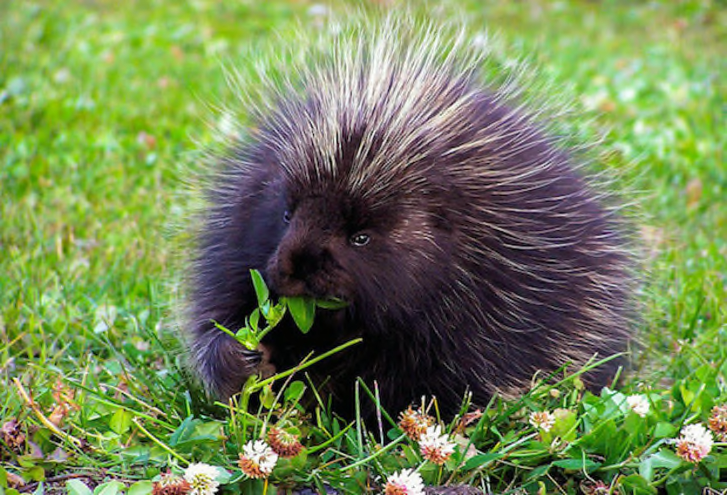
Each quill is equipped with tiny barbs, much like a fishhook. By nature, they are not aggressive, but will happily defend themselves. Because they are nocturnal, they do most of their feeding in the early evening. Porcupines are herbivores, slow moving and have a great sense of smell. If you find a tick on your pet, the first priority is to remove it before it has a chance to attach. It is important to check your pet for ticks after they have spent any time outdoors. Ticks don’t fly but rather “quest” by stretching out their forelegs to grab and cling onto a passing animal or human. Ticks also exist in non-wooded areas such as long grass. It’s more common to find ticks outdoors in leaf litter, shrubs or bushes. A fully fed adult tick can get as large as a grape. After attaching and feeding, the tick’s body will increase in size. The nymphs are roughly the size of a sesame seed, and an unfed adult can be the size of an apple seed. There are multiple species of ticks, and they come in different sizes and colours. They have the potential risk of transmitting several diseases. Ticks are pesky little parasites that attach to your pet and feed off them. Avoid allowing the dogs to roam at dusk or after dark, and prevent them from going into areas with known porcupine dens.With the warmer weather upon us, pet owners need to be aware of a few springtime dangers. The best defense against porcupine quills is prevention. Unfortunately, most dogs who get into trouble with porcupines do not learn from their mistakes. If a dog gets a mouthful of porcupine quills, will they learn to leave porcupines alone? Migrating quills can also embed in joints, poke into the eye, or even penetrate into the brain or other organs, creating a real life-threatening health crisis. The most serious potential complication of porcupine quills is infection deep in the tissues. What are some potential complications for my dogs being quilled by a porcupine?

Any that cannot be removed will be monitored for migration and any complications that may arise. As many quills as possible will be removed, but it is important to understand that there may be quills that cannot be removed. Dogs need deep sedation or general anesthesia in order to have porcupine quills removed safely. Get to a veterinarian as quickly as possible. Minimize your dog’s movements, and prevent him from rubbing his face if there are quills present, as this may drive quills deeper, making them more difficult or impossible to remove. Since porcupine quills are not a do-it-yourself project, what should I do if my dogs get quilled? This can result in a struggle, which can push the quills deeper, and a dog may lash out and bite, without meaning to hurt you. Removing porcupine quills without the benefit of sedation or anesthesia and potent pain relief is extremely painful. It may also allow for segments of quills to become lodged in the tissues.Ĭan I remove the porcupine quills from my dogs myself if needed? Cutting the shaft makes the quill splinter more easily which ultimately makes it harder to remove. It is simply a misconception that cutting embedded porcupine quills will “deflate” them, making it easier to remove them. Should I do that if my dog gets into a spat with a porcupine?


I also heard that I should cut the quills in order to make them easier to remove. Dogs can end up with abscesses over much of the body, making treatment much more complicated and increasing the risk for a body-wide infection that is potentially fatal. This opens the door for infection, and the deeper the quills penetrate, the more serious the infection can be. Because of the tiny barbs on the shaft of porcupine quills, they actually tend to move inward - deeper into the tissues - rather than working themselves out. Will porcupine quills eventually work their way out of the skin if nothing is done to remove them? Porcupines will also use their quill-filled tail like a club, swinging it at a potential threat. That said, the quills are easily pulled from the porcupine’s skin once they come into contact with an animal attacker. Porcupines cannot shoot their quills at an assailant. I have heard that porcupines can throw or shoot their quills to defend themselves. Because the quills carry bacteria with them, once they penetrate the skin they can serve as a source of infection and abscesses. Porcupine quills can puncture the skin and move through muscle, ultimately penetrating into body cavities and internal organs. Quills are modified hairs and are covered with scales that act like fishhook barbs causing the quills to keep moving inward, deeper into the tissue. "Quills are modified hairs and are covered with scales that act like fishhook barbs causing the quills to keep moving inward, deeper into the tissue."


 0 kommentar(er)
0 kommentar(er)
